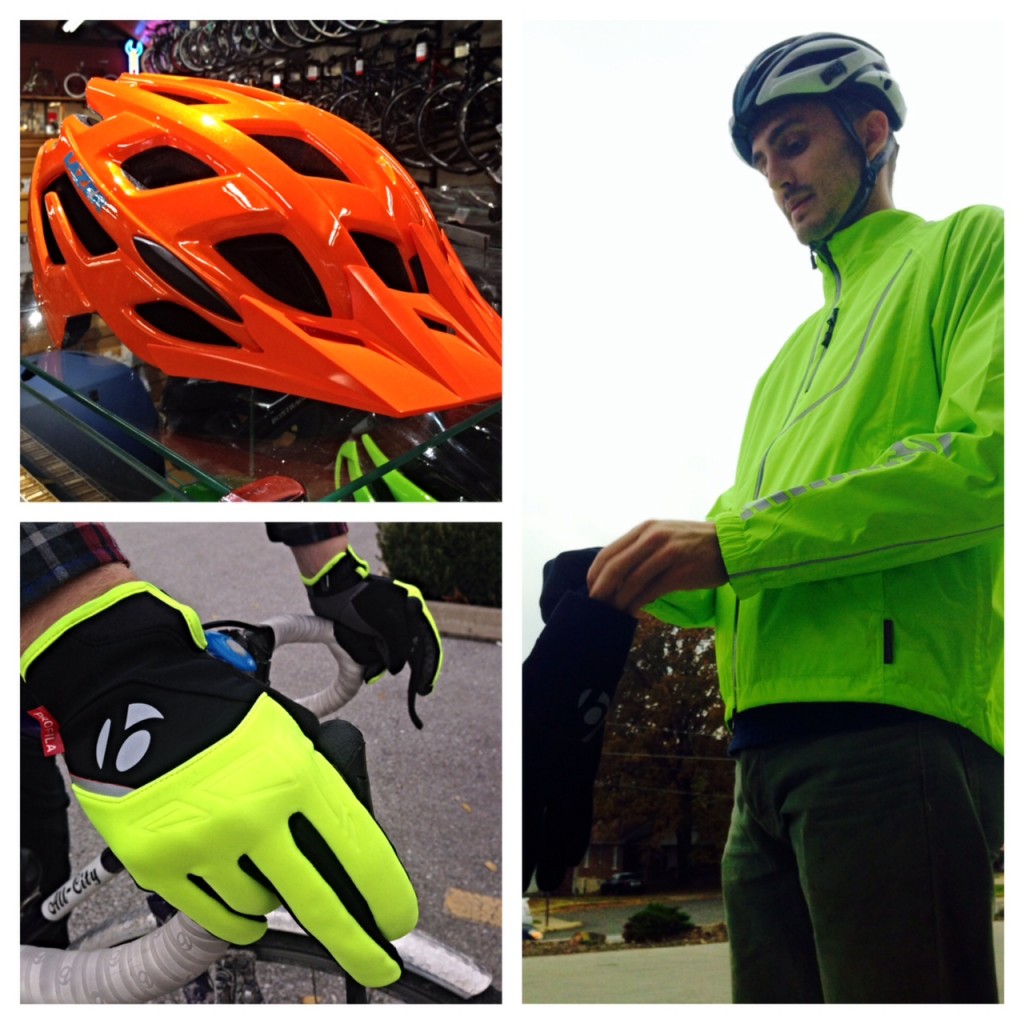It's that time of year again. The leaves have moved from vibrant reds and oranges to brown, now covering most trails. It always takes me a couple of rides to get used to the cooler temperatures, but I eventually get my layering system dialed. Having the proper clothing and equipment in the Winter is key in Missouri, and it makes riding throughout the year much more bearable. What you wear completely depends on what you're doing. Are you commuting to work, going on a training ride, just going for a leisurely ride on the trail, or maybe even racing? Many of the different items you can buy can be used for most of these things, so you don't need to buy four different types of jackets. Figure out what you'll be using each piece for to help make the best decision.
Before we move on it's important to note that everyone is a little different, so figure out what works for you and stick with it.
The Commuter
There are two main items needed for commuting: a jacket and a good pair of gloves. Sure, it's probably a good idea to have a warm hat on underneath your helmet and maybe some waterproof pants on the rainier days, but keeping your core and hands warm should be most people's first priority. The jacket should be windproof or at least resistant and maybe even have some insulating properties. By no means does your jacket need to be cycling specific, though they usually have some nice features. A Patagonia or North Face rain jacket would do a good job as an outer layer as well. Layering underneath is a good idea; we'll touch on that later.
Visibility is always important when you're riding around town. Most companies now offer a variety of clothing and accessories in hi-viz colors. Hi-viz not really your thing? Most cycling specific wear usually has some sort of reflectivity, so look for that when making a purchase.
Performance Wear
Layering is always key in colder temperatures, but extremely important when you're on a longer training ride or at a race.
Let's start with the baselayer. Have a variety of baselayers to choose from. Long sleeve, short sleeve, no sleeves, synthetic, wool, maybe even windproof. From there, figure out when to use each type. Wool retains its heat when wet, so reserve that for the colder days. Most synthetic baselayers are great at moving moisture off of your skin and are quick to dry, so they'll keep you from overheating when the effort starts to increase. Patagonia's capilene and wool baselayers are perfect, and they make several different weights and types.
Moving outwards, a good thermal layer may be needed if it's really cold or the effort you'll be exerting will be lower. Any sort of heavier jersey or light fleece will work here.
Your outer layer should be windproof. A decent jacket or a vest to keep your core warm that's easy to unzip in case you start to sweat too much. Softshell jackets are another good option as they are generally windproof and have some sort of fleece lining. If you're using a softshell it's probably a good idea to not layer as much underneath.
Leg coverage is another thing to consider and many people differ on temperature range here. Knee warmers, leg warmers, thermal tights, and windproof tights offer options for a multitude of situations. A good pair of knee or leg warmers should be in everyone's closet as they're relatively inexpensive and easy to put on/take off.
Keeping the feet warm can be one of the more difficult tasks this time of year. A good pair of wool socks and a pair of shoe covers goes a long way. Again, wind protection is the name of the game here. There are lots of different types of shoe covers for road and mountain shoes. Most of them offer wind protection and some even have insulating properties.
Finally, a couple different types of cold weather gloves that you can pair up with a lightweight liner glove should take you through a multitude of cold weather scenarios. One pair of light windproof gloves that you can wear with a liner (if needed) and a pair of insulated windproof gloves are what I usually recommend. Proper glove choice is something you'll learn quickly after you loose the feeling in your fingers the first couple of times.
Riding outside in the Winter can be really fun if you're able to keep yourself warm. It doesn't take long before you know exactly what to wear and we have everything you'll need to get your layering systems in order. Always feel free to give us a call or stop by the shop if you have any other questions!








